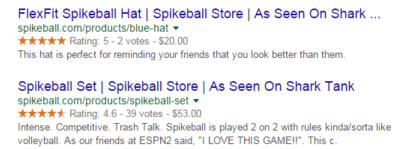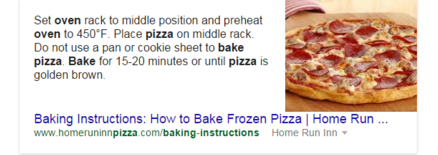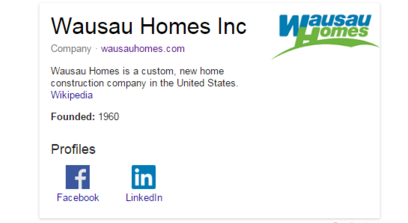Here’s a brief overview of the recent Google update from an organic search standpoint. For a more in-depth analysis of the change, check out my article below.
The digital world is buzzing this week due to a major change in how Google displays its desktop results, removing right-side text ads in favor of adding a fourth ad to the top of search results.
Logically, this update led us to ask, “What does this mean for organic search results?” One thing is certain: since adding another paid ad at the top will push organic results even further down the page, it is more important than ever to stand out. As we predicted in our 2016 preview post, marketers will need to master different types of listings in order to stand out among the competition and take up more visual real estate. With this recent change in desktop results, our prediction has quickly become a reality.
Here’s a quick 101 on how to move beyond the “plain old search result” to effectively compete in the organic search landscape.
Optimize Map Listings
Coupled with a 2015 update that limited the number of map listing organic search results to three, this 2016 Google update means it is more important than ever for businesses with locations to take an active part in competing for space in the “Map Pack” listings.

How-to: You need to cover local search tactics as part of your SEO strategy. For beginners, make sure that you not only own your business listing in Google, but that your listings have also been proliferated across the web with (at the very least) up-to-date NAP information, an industry abbreviation for Name, Address, Phone Number. (The Envisionit SEO team prefers “NAPW” because, astoundingly, many business listings that we clean up have incorrect website information as well.)
Create Rich Snippets
Listings that can be enhanced through rich snippets include ratings and reviews, recipes, videos, and…well, more types than we can cover in this post. While not technically a rich snippet, we also want to discuss image optimization because image results stand out in the same way that enhanced listings do, and are often overlooked as a valuable source of traffic.
- Ratings and reviews: Star listings (assuming you have already garnered positive ratings/reviews) in the Google SERPs attract more clicks and eyeballs by taking up an extra line of space on the results page.

How-to: Mark up the videos on your site with video-specific structured data. By creating a video-only XML sitemap, you can get your videos to rank and send viewers to your website.
- Videos: Your videos can rank in search engines simply by being published on a popular video platform such as YouTube or Vimeo. Without further effort though, video listings will take users to YouTube and Vimeo rather than straight to your website.

How-to: More than simply existing on your site, the ratings and reviews that you feature need to be coded so that Google crawlers will see them before these types of listings can be triggered for your brand. Learn about the microformatting needed in the Google Developer’s Guide. It helps to understand the requirements before you choose a plugin or a vendor for your online reviews to ensure compatibility with rich snippets.
- Images: These results appear for a variety of different keywords, usually those related to something highly visual.

How-to: Make sure you’re using good image SEO tactics to target visual keywords in your industry such as [“insert product here” + pictures] or [“insert service here” + infographic] or [“insert topic here” + quotes]. Inherently visual verticals, such as jewelry designers, will want to optimize all of their images for SEO.
- Articles and answers: Google will often show content containing answers to common questions in a separate box at the top of the search results page like the one below.

How-to: Create useful content centered on common questions relevant to your target audience.
- Recipes: Recipe listings can display calories, cook time, images, and other details within the search results.

How-to: You can enhance your recipe listing with additional features by marking up your recipe pages with recipe-specific structured data.
Leverage Knowledge Graphs
Google’s recent investments into harvesting and combining massive data sources combined with interpretation of that data by artificial intelligence to create the Knowledge Graph have been quietly changing the way we search for several years. The bottom line impact is that Google is quickly getting smarter and has been using its capabilities to create new ways of showing results. While we expect the Knowledge Graph options to continue to evolve, here are some of the most important ways to get featured in new types of results.
- Brand box: The most important Knowledge Graph result for brands is the brand box, which displays on the right-hand side for searches related to your brand. This space will be empty (or filled with PLA ads) if you aren’t part of the Knowledge Graph.

- Customer support brand box:

How-to: Since Google’s Knowledge Graph is built using a huge number of sources, there are a variety of ways to improve your presence. Use Schema.org microformatting on your website for your organization’s basic information such as your logos, company contact numbers, and social media profiles. It is also helpful to have entries in Wikipedia and DMOZ.
Not only will these recommendations improve your visibility in organic search listings, but they’ll also lend authenticity to your brand. By establishing your map listings and knowledge graph panels, you indicate to your consumers that your business is itself established and reputable, and by improving your rich snippets, you distinguish your brand as a thought leader in its category.













